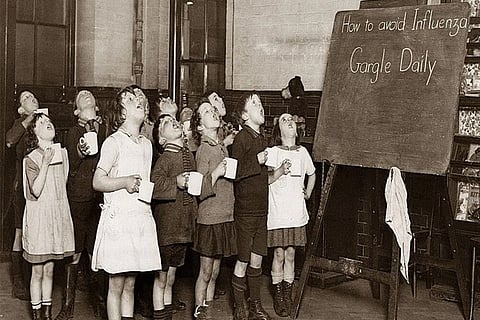

Chennai
But I wanted to write about these past sorrows as part of a trajectory that leads to a happy story about children not dying. I wanted to understand and to celebrate what I think may be our most noble project as humans, and noble precisely because it never was a single project: We have dared to imagine a world in which parents can expect their children to live to grow up, and we have taken many steps (giant steps and, if you will, baby steps) in that direction.
This was the world of my training in pediatrics in the 1980s: Every child should live to grow up in health and safety. This was what drew people into pediatrics: Our patients would outgrow us. When I described the idea for this book to publishers, I found myself starting with the phrase, “We are the luckiest parents in history.” And that’s how I have come to be publishing a book during a terrible year with the seemingly incongruous title, A Good Time to Be Born. Because, believe it or not, even in 2020, parents in the US and in many other countries, and not just the very richest, are among the luckiest parents in history. We can, for the most part, hope and even expect to see our children live to grow up, and we live in a society shaped and coloured by that expectation. And for all of the anxieties and terrors of this present moment, as parents, we are actually on the lucky side of a divide that separates us from the parents who came before.
At the beginning of the 20th century in the US — my grandparents’ moment — as many as 20 pc of the children born didn’t make it to their fifth birthdays, and earlier in human history that was probably far higher. The parents who came before, all through history, loved their children, cared for their children, but expected children to die. In 1906, a British physician, George Newman, published Infant Mortality: A Social Problem, citing mortality rates all over Europe of 100 to 300 babies out of every 1,000 dying before their first birthdays, “a vast army of small human beings that lived but a handful of days.” This was the historical moment when people in many countries began counting those deaths, as we still count them, and using them as an index to a society’s well-being.
Collectively, as human beings, we changed the game. It took science, medicine and public health, it took sanitation and engineering and safety legislation, and it took many different kinds of education and parent advocacy. And it took vaccines and antibiotics, those 20th century game-changers.
Keeping children safe, and making the world safer for them, was the sum of many different efforts, from international campaigns to laboratory experiments to local endeavours. Before there were antibiotics, before there were any vaccinations except for smallpox, there were the nurses who went door to door in the tenements of the Lower East Side in the summer of 1908, talking to mothers about how to prevent the cholera infantum, or summer diarrhoea, which was expected to kill 1,500 babies a week.
And there were mothers who listened: In the district where the nurses were deployed, there were 1,200 fewer infant deaths than the previous summer; everywhere else, the death rate was unchanged. Dr S Josephine Baker, who directed the project, wrote “I had learned one certain thing: heat did not necessarily kill babies.”
But even if we make the world more equitably safe, even if we improve on different aspects of child safety and child health, we know in our hearts as parents (and as paediatricians) that it will never be perfect. There will always be dangers, and there will always be tragedies. But we have come, already, to a place that would look to the parents of a century ago like a place of privilege and safety, and, yes, good luck. And perhaps if we credit the science and medicine and public health and advocacy and education that brought us — and our children — to this place, we can believe in our collective ability to take on the complexities of this new pandemic and to take ourselves and our children to a new safety.
Dr Perri Klass is the author of the forthcoming book A Good Time to Be Born. NYT©2020
The New York Times
Visit news.dtnext.in to explore our interactive epaper!
Download the DT Next app for more exciting features!
Click here for iOS
Click here for Android